Choosing the right dog crate for crate training is one of the most important decisions you’ll make as a pet owner. Not only does it provide a safe space for your furry friend, but it also plays a crucial role in house training and behavior management. In this comprehensive guide, we’ll walk you through everything you need to know to make an informed decision.
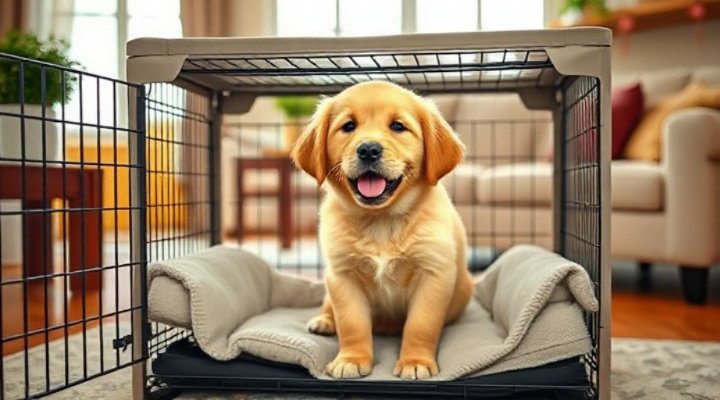
Why Crate Training Matters
Crate training offers numerous benefits for both dogs and their owners. For dogs, it creates a den-like environment that satisfies their natural instinct for a safe, enclosed space. For owners, it provides a humane way to manage behavior and facilitate house training. According to the American Veterinary Medical Association, proper crate training can significantly reduce anxiety and destructive behaviors in dogs.
When I first adopted my golden retriever, Max, I was skeptical about crate training. However, after consulting with a professional trainer (you can find great tips in our Golden Retriever training guide), I realized that done correctly, it’s one of the kindest things you can do for your pet.
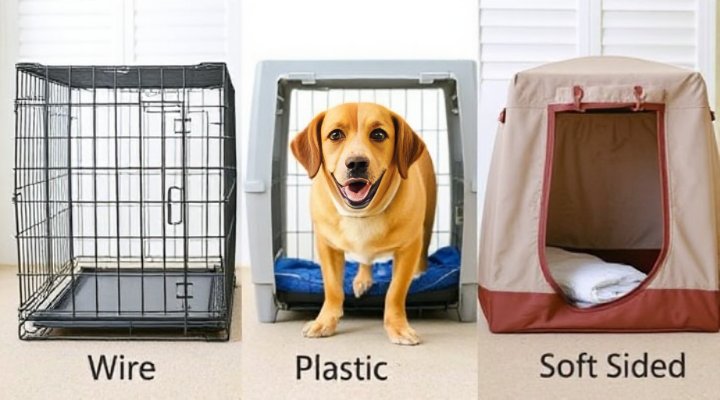
Types of Dog Crates for Crate Training
There are several types of crates available, each with its own advantages:
Wire Crates
Wire crates are the most popular choice for crate training. They offer excellent ventilation and visibility, which helps dogs feel less confined. Many models are collapsible for easy storage and travel. The best crate for puppy training often falls into this category.
Plastic Crates
Plastic crates are more enclosed, providing a cozier den-like feel. They’re often preferred for travel as they’re airline-approved. However, they may not offer as much airflow as wire crates.
Soft-sided Crates
Soft crates are lightweight and portable, making them ideal for well-trained dogs who need occasional confinement. They’re not recommended for puppies or dogs who might chew, as they’re not as durable.
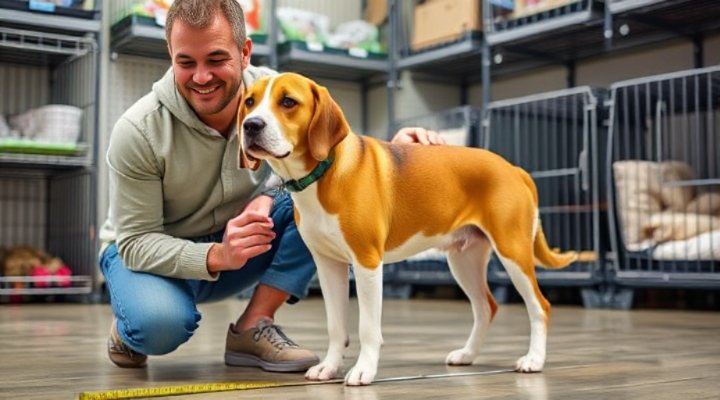
How to Choose the Right Size Crate
Selecting the proper size is crucial for effective dog crate training. A crate that’s too large defeats the purpose of house training, while one that’s too small is uncomfortable.
To measure your dog:
- Have your dog stand naturally
- Measure from nose to base of tail
- Add 2-4 inches for comfort
- Measure from floor to top of head (or ears if erect)
- Add 2-4 inches
For growing puppies, consider a crate with a divider panel, like those mentioned in our puppy crate training guide. This allows you to adjust the space as your puppy grows.
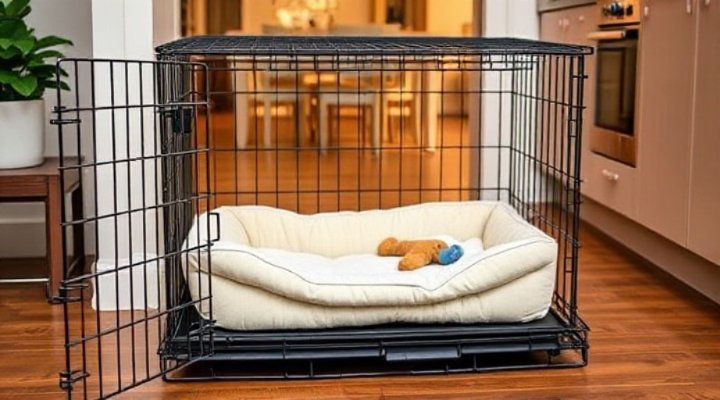
Making the Crate Comfortable
A comfortable crate is key to successful crate training for dogs. Here are some essentials:
- Bedding: Choose washable, durable bedding that provides comfort without being too plush (to avoid accidents)
- Toys: Include a chew toy or two to keep your dog occupied
- Water: For longer periods, consider a crate-mounted water bottle
- Cover: A light blanket over part of the crate can create a cozier den atmosphere
The Humane Society recommends making the crate inviting with familiar scents and positive associations.
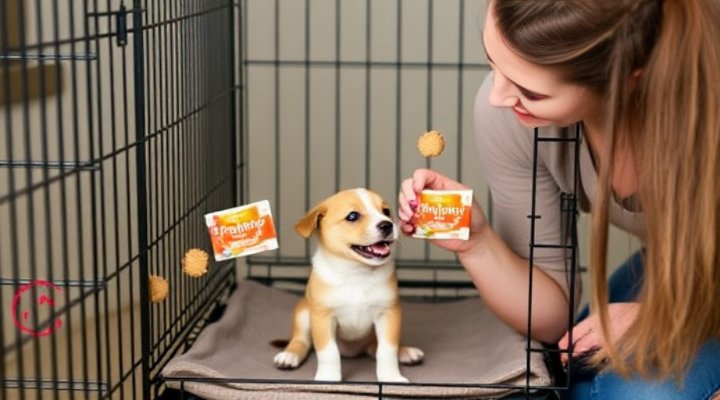
Crate Training Tips for Success
Now that you’ve chosen the perfect dog crate for crate training, here’s how to make the process smooth:
- Start slow: Let your dog explore the crate with the door open at first
- Use treats: Toss treats inside to create positive associations
- Meal times: Feed your dog near, then eventually inside the crate
- Short sessions: Begin with brief periods and gradually increase duration
- Never punish: The crate should always be a positive space
For more detailed steps, check out our scientific crate training methods article.
Common Crate Training Mistakes to Avoid
Even with the best intentions, owners can make mistakes with crate training. Here are some pitfalls to avoid:
- Using the crate as punishment
- Leaving your dog crated too long
- Choosing the wrong size crate
- Not making the crate comfortable enough
- Rushing the training process
Remember, every dog is different. Some may take to crate training immediately, while others need more time. If you’re struggling, consider consulting a professional from our dog behaviorists directory.
Final Thoughts on Choosing a Dog Crate
Selecting the right dog crate for crate training is an investment in your pet’s well-being and your peace of mind. By considering your dog’s size, temperament, and needs, you can find the perfect crate that makes training effective and humane.
Whether you’re housebreaking a puppy or providing a safe space for an adult dog, the right crate, combined with positive training methods, can make all the difference in your pet’s comfort and behavior.
Related Keywords: dog crate sizes, best crate for large dogs, crate training schedule, how long to crate train a puppy, portable dog crates, anxiety relief crates, crate training benefits
